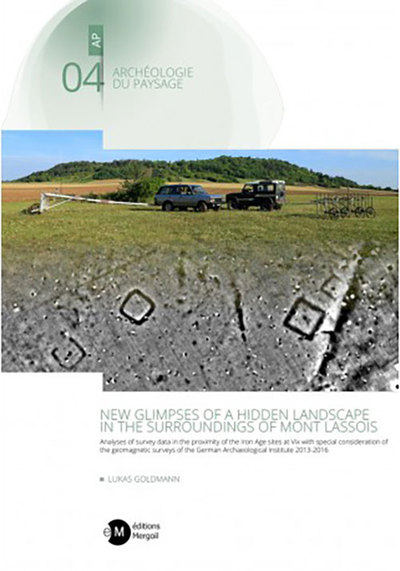- EAN13
- 9782355181115
- Éditeur
- MERGOIL
- Date de publication
- 23 janvier 2021
- Nombre de pages
- 274
- Dimensions
- 29,7 x 21 x 1,2 cm
- Poids
- 1100 g
- Langue
- eng
New Glimpses Of A Hidden Landscape In The Surroundings Of Mont Lassois, Analyses Of Survey Data In The Proximity Of The Iron Age Sites At Vix With Special Consideration Of The Geomagnetic Surveys Of The German Archeological Institute, 2013-2016
Lukas Goldmann
MERGOIL
Prix public : 43,00 €
The area around Mont Lassois and the village of Vix (Côte-d‘Or) has been the subject of archaeological research for more than a hundred years and yielded a number of unique finds and excavated structures, most notably the famous burial of the “Princesse de Vix”. In addition, decades of prospections, and aerial archaeology in particular, made the region one of the best investigated archaeological landscapes in Europe. In recent years, this research was intensified and bundled within the joint framework of the PCR “Vix et son Environnement”.In collaboration with the PCR the German Archaeological Institute has conducted largescale, high-resolution geomagnetic surveys around Mont Lassois since 2013, providing valuable insights into a hidden cultural landscape.The focus of this thesis is on the analyses and interpretation of the data obtained during the 2013 to 2016 campaigns in comparison with the known archaeological sites from the area, as well as other data, such as aerial images, LiDAR scans and geological maps.Different methods of automated data analyses, vectorisation and data integration using Geographic Information Systems have been employed to interpret this plethora of data, their potential and limitations are discussed in the theoretical part of this thesis. The combined analysis and application of these different datasets and methods revealed, among other features, new burial structures as well as so far unknown settlement areas. These results underline the important role of large-scale geophysical surveys for our understanding archaeological landscapes.


















